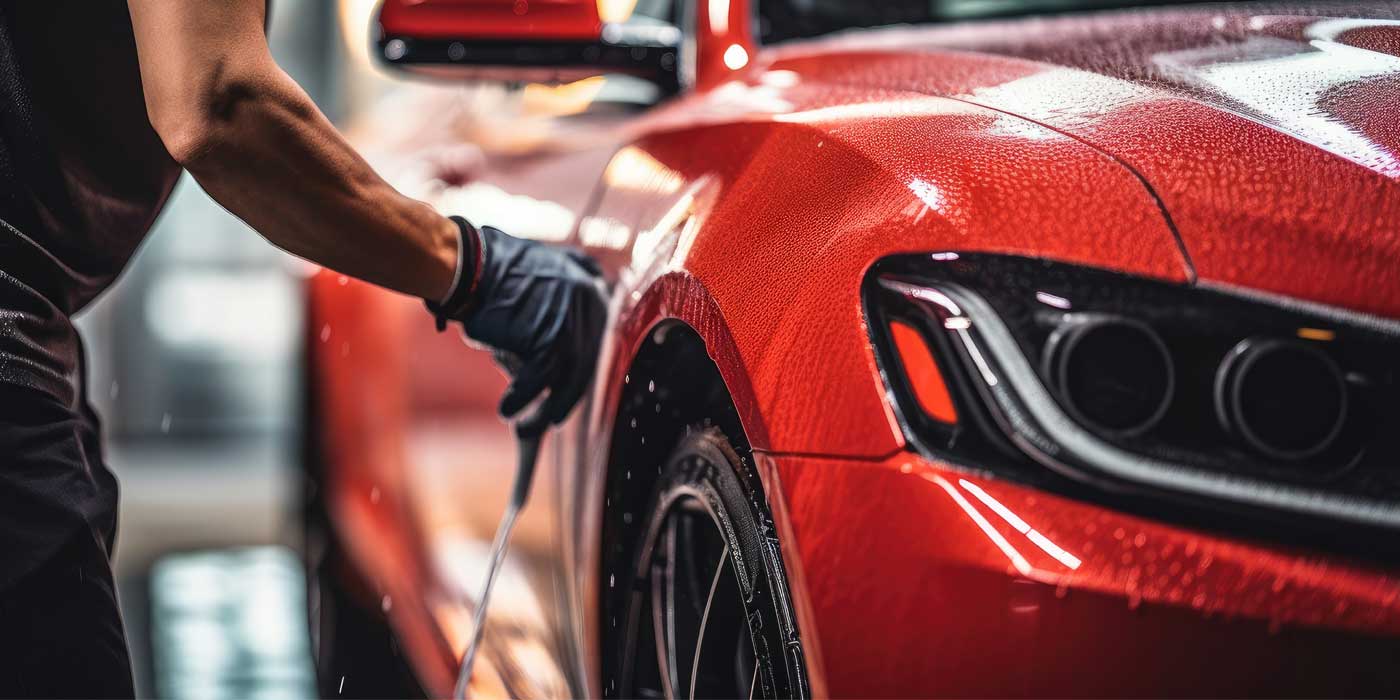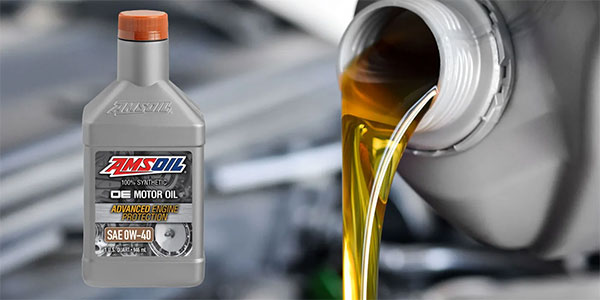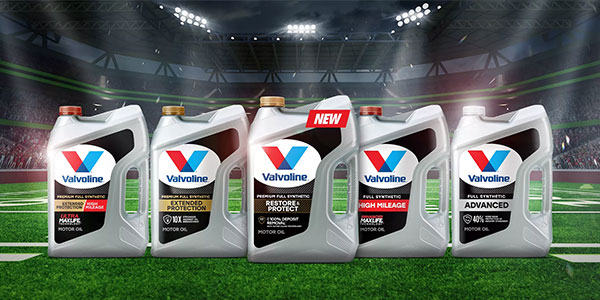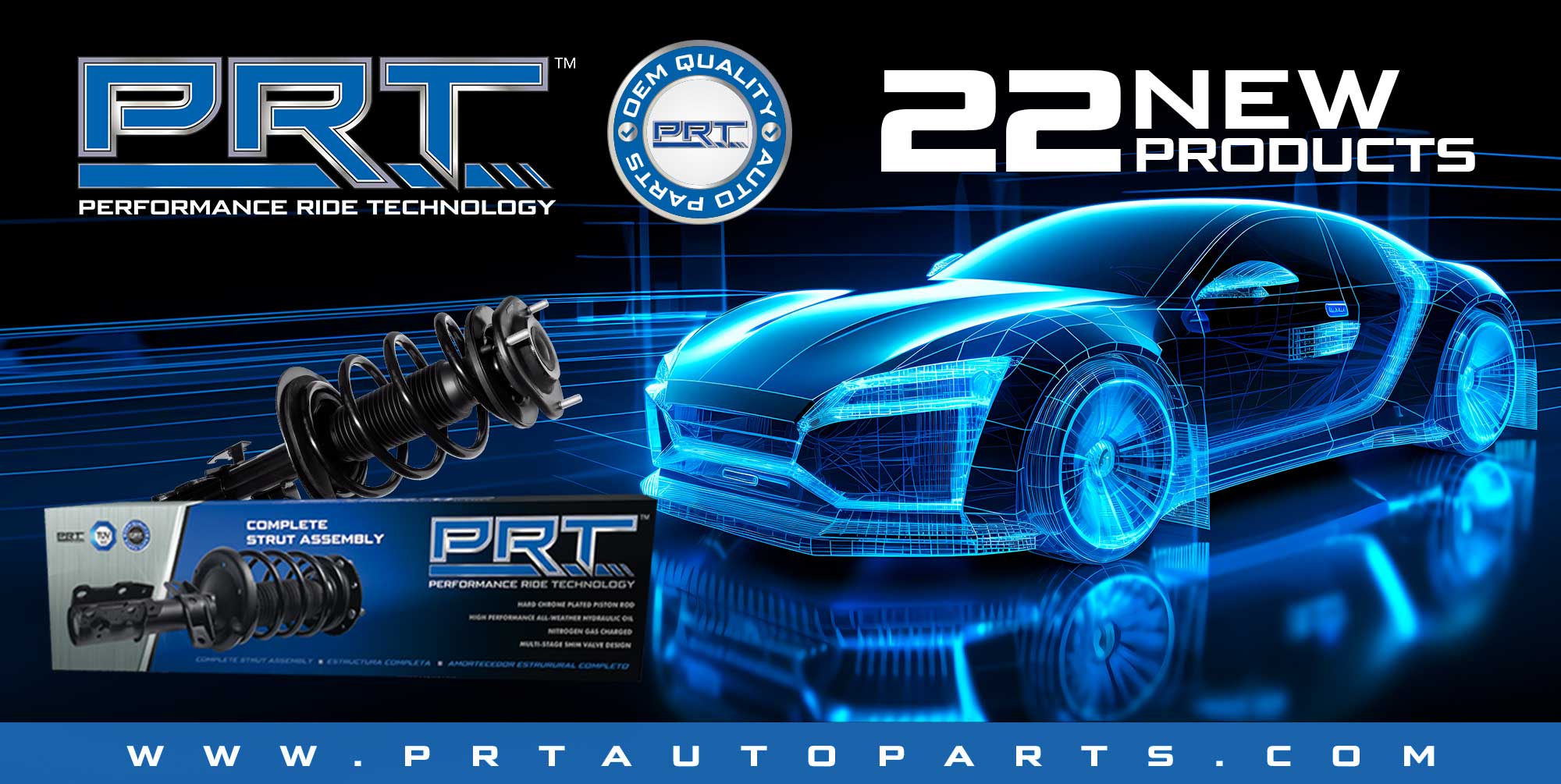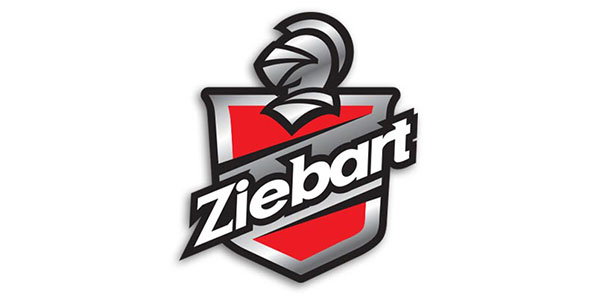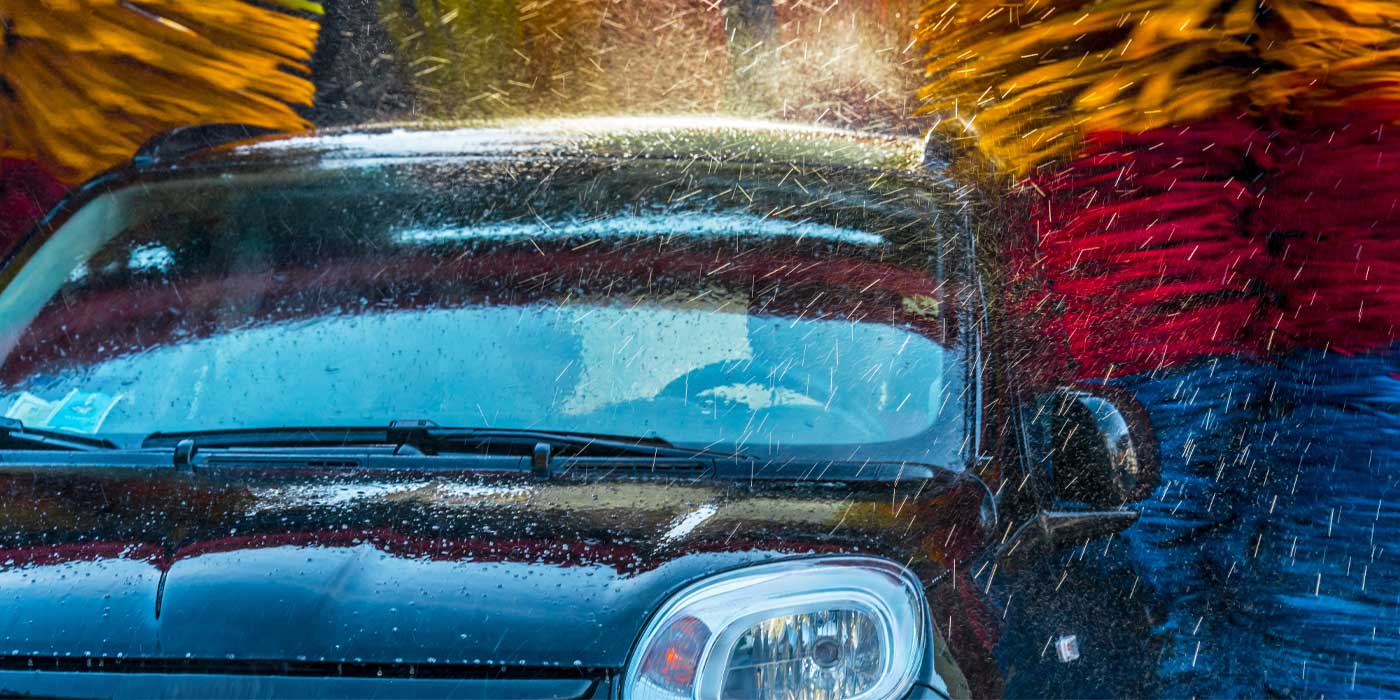An automobile comes to your detail business with chemical etch marks. They could be water spots, pits or pin holes in the finish. How do you begin the repair process? Unless you can tell with certainty that the etching has eaten through the clear coat, you should try to make the repair rather than recommend a repaint.
I do not endorse any one repair process because most on the market will do a good job when used according to the supplier’s instructions. If you are trying to determine which process to purchase, call the supplier and request a demonstration.
For any chemical etch repair, you should follow the product manufacturer’s specific instructions. But I would recommend you definitely have the following:
· A digital paint thickness gauge;
· A buffer having the proper speed range for use with the specific repair products;
· Wool cuttings pads;
· Foam polishing pads;
· An assortment of micro-fine grade sandpapers for sanding;
· A semi-rigid sanding pad for use with the micro-fine sandpaper;
· Aggressive compound;
· Micro-fine compound;
· Swirl remover/polish; and
· Wax or sealant for protection.
Paint Thickness Gauge
Regardless of the repair system used, you should also obtain and use a digital paint thickness gauge. There are less expensive magnetic units available, but they are not as accurate.
The paint thickness gauge is recommended for chemical etching of repair work because you must know how much of the clear coat you are removing in order to complete an effective and lasting repair.
The gauge measures the total thickness of the entire film on the vehicle. Since the clear coat film is on top, you can easily determine how much of it you are removing during the repair process by simply subtracting subsequent measurements from the starting total. As mentioned previously, you should remove no more than .5 mils of clear coat during the repair.
Without a paint thickness gauge you are buffing and sanding in the dark. The final repair might look great when it is done, but a few weeks or months later, the repaired paint may crack, peel or fade. The paint gauge will help you do the job right the first time.
Rotary buffers
This is the dominant buffing machine used by professionals for all types of paint finishes, either electric or air. You want to use one that has a variable speed control. The correct buffing speed is determined by the type of damage you are correcting.
· Low speed (1200 – 1500 RPM): Most effective on newer, high tech paint finishes which are more reactive to excessive heat build-up and static.
· High speed (1600 – 2500 RPM): Ideal for use on older style, single-stage acrylic lacquer and acrylic enamel paint finishes. NOTE: High speed buffers require a higher level of operator skill.
Be sure you have a rotary buffer with the correct speed range for the particular products you will be using. Some chemical manufacturers recommend that a high-speed buffer be used with their products; others recommend an orbital or dual-action. In order to obtain the best results, always match the buffer speed to the products you are using.
Two more cautions regarding the use of a buffer:
Many manufacturers recommend using a high-speed buffer, which helps in repairing clear coats — but it may be wrong for special finishes. Just be sure that the products and buffer are appropriate for the finish on a particular vehicle before using them.
A high-speed buffer can cut through or burn paint quickly. To avoid unnecessary damage, only a skilled operator should be using a high-speed buffer.
A typical repair
For the purposes of this article, we will consider the following project: you are repairing a 1999 model vehicle. The paint has etch marks scattered across all of its horizontal surfaces, requiring that several large areas must be replaced. Please note that the items listed above (in particular, the paint thickness gauge), should be used in the following chemical etch repair process.
Preliminary repair steps
The vehicle should have a base-coat/clear coat finish, but if you are not sure of the type of paint system, there is a simple thing to do. Put a small amount of non-aggressive polish on a white towel and rub several areas of the paint. If no color transfers to the towel, the vehicle has a clear coat finish. (If color does transfer to the towel, you are working with a single stage paint and the methods described in this article may not work for this particular paint system.)
Once you have established the paint system, choose a test area of about two-feet by two-feet on which to see whether the damage can be repaired without repainting. The test area should representative of the overall severity of etching damage on the finish. It should contain some of the worst and some of the least severe etch marks.
If it is impossible to find a two-feet by two-feet area like this, test the procedure on the least severe spots first. If the damage is scattered all over the horizontal panels on the car and these least severe spots cannot be repaired without disturbing the basecoat, it is time to forget this type of repair and tell the customer the vehicle should be repainted.
With a test area chosen, you need to know whether a paint sealant has been applied to the finish. If it has, the sealant must be removed with a solvent. If it is not removed, the sealant may slow down the process and end up being ground into the finish.
Any paint finish without a sealant application requires only a good washing with a mild detergent to neutralize and remove contaminants and dirt, and a thorough rinsing. Of course, stubborn substances like wax, tar, bugs and grease must be removed with a solvent before washing and rinsing.
Next, measure the total thickness of the paint in the test area. This allows you to know how much clear coat you are removing during the repair process. It also allows you to calculate a “stop point” beyond which you can go.
OEM factory applied clear coat is usually 1.5 mils thick. It is safest to leave at least 1 mil of clear coat to protect the basecoat. So, no more than .05 mils should be removed from the total film thickness. If more than that is removed and the base-coat is not disturbed, the clear coat must be reapplied on the repair area to restore proper base-coat protection. In addition, it becomes necessary to reapply clear coat, the last thickness reading can be compared to a reading after the clear coat has dried. This allows you to determine whether adequate protection has been restored.
For example, the paint thickness in the test area may be 4.1 mils, so it would be safe to remove .05 mils. Your stop point is 3.6 mils. Reducing the total thickness anymore than this will remove too much of the clear coat. As necessary, you can buff or sand until you reach 3.6 mils. Go beyond this point and you may need to refinish, at least with clear coat, and if you break through the base-coat a refinish for sure.
Be sure to make it policy to measure the paint thickness on every vehicle which you are trying to remove chemical etch marks. Different vehicles have different total film thicknesses. So, the stop point for each vehicle will be different. Do not assume that the starting thickness is always 4.1 mils and the stop point is 3.6, that is not true.
Buffing
Start the actual etch removal process by buffing, since this is the least abrasive approach and you want to remove as little of the clear coat as possible. Apply a strip of 800 or 1,200 grit compound to the test area. Then, using a high speed buffer and a clean wool cutting pad spread the compound on the panel.
Buff the area, moving only back and forth lengthwise (from the back to the front of the car) on the panel. Tape any feature lines and panel edges to avoid burning through the paint in these areas. If necessary, you can buff these spots later by hand. After several passes, wipe the area and check your progress. If etch marks are still visible, apply another strip of compound. Check to see that the pad is still clean, spread the compound and buff the area again.
Since buffing can remove a surprising amount of clear coat, you want to work for a short period of time and check the results frequently. Often, one or two buffings with the proper compound will do the job. If the etch marks are removed, all you would need to do from this point is polish and then wax the area to complete the repair. Unfortunately, sometimes the etching goes deeper than buffing alone can repair. In this case, you will have to sand.
Sanding
First, it is recommended to check several spots on the vehicle to determine how much clear coat might have been removed from previous buffing or sanding. A typical measurement could show the total paint thickness from 4.1 mils to 3.9 mils. Since this measurement is above the 3.6 stop point, you can remove 3 mils of clear coat before clear coat repainting would be necessary.
You need to choose the correct grade of micro-fine sandpaper for the particular process you are using.
· Light etching: A 2,000 grit sandpaper is adequate;
· Medium etching: Begin with 1,500 grit and finish with 2,000; or
· Heavy etching: Begin with a light 1,200 grit and move to finer grades of sandpaper, such as 1,500 and 2,000.
NOTE:Because different numbering systems are used to grade micro-fine sandpaper, be certain you use sandpapers graded according to American National Standards Institute (ANSI) standards. European grading, indicated by a “P” in front of the number, differs significantly from the ANSI system. For instance, their 1,200 paper is approximately equal to 600 grit by ANSI standards, a big difference.
To wet sand correctly, use micro-fine sandpaper that has been soaked in a solution of water and a few drops of liquid dish detergent. Then wrap the sandpaper around a semi-rigid sanding pad to evenly distribute the sanding pressure on the repair area. Using the pad helps you to avoid finger mark streaks caused when sanding by hand.
Sand using light, even pressure and work lengthwise with the panel. Also, keep the repair area flooded with soapy water. This helps hold the sanding debris in suspension and keeps it from further scratching the finish.
Stop often during the process and clear the area with a squeegee to check your progress. At this time also check the paint thickness to see where you are in relation to the 3.6 mil stop point. You stop sanding when there are no more signs of etch marks in the paint. The highs and lows in the clear coat should be completely evened out and the finish should be evenly dulled.
Check the thickness of the paint at this point. The total may now be down to 3.7 mils which is still above the 3.6 mil stop point.
NOTE: If you see any color on the buffing pad, sandpaper, or in the sanding water at any time during the repair process, this means you have broken through the clear coat and you have gone too far and the panel or area will have to be repainted.
Finish buffing
Now you have to bring the dulled finish back to a shine by removing the sandpaper scratch marks. Some suppliers recommend a follow-up final sanding with 2,000 grit sandpaper then a micro-fine compound with a poly/wool pad. Then measure the film again and is should not be less than the 3.7.
Final repair steps
Now that you have repaired the damaged sections on the vehicle, wash it in preparation for final swirl removing/polishing and waxing. The swirl remover/polish will remove any buffer swirls and restore the gloss and shine. This polish should be used with a buffer at low speed and a clean foam polishing pad. Use the product sparingly, spreading it with the polishing pad or a sponge block. Buff the paint while holding the pad flat against the surface of the car letting the weight of the buffer do the work. When this is completed you can apply a coat of wax or paint sealant for final protection.
In most cases, using this or a similar process will eliminate the etching and still leave sufficient clear coat thickness to protect the base-coat without the need for repainting.
Final points
The three key points to keep in mind regarding this type of repair are:
Differences in products usually mean differences in application methods. Always follow the manufacturer’s instructions exactly as written.
No matter which product and process chosen, use a paint thickness gauge at the beginning and frequently during the process to make sure that you have not removed too much clear coat. You must know how to make the repair and when to stop.
Removing more than .05 mil of clear coat is too much and does not leave sufficient protection for the base-coat. If more than .05 clear coat is removed and the base-coat is not disturbed, the repair area should be resprayed with clear coat. If the base-coat is disturbed, the repair area should be completely repainted.
R.L. “Bud” Abraham is president of Detail Plus Car Appearance Systems,

